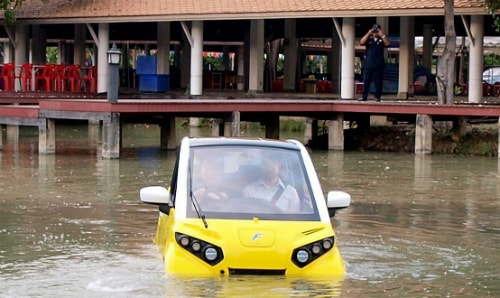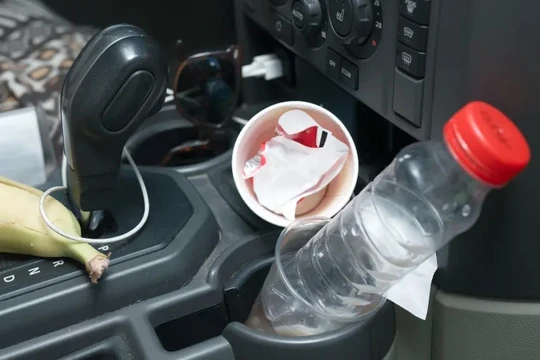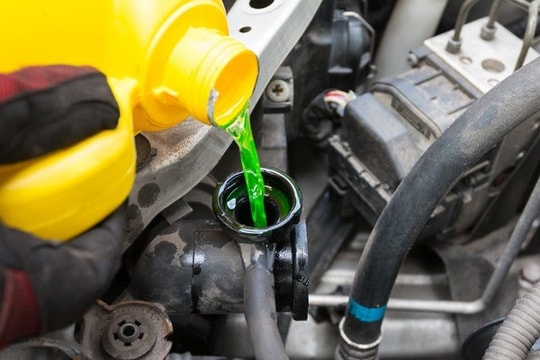Car that can "swim" in floods costs 18,000 USD
The $18,100 electric car that can "swim" through flooded roads was the idea of a Japanese engineer after witnessing the 2011 tsunami.
Hideo Tsurumaki witnessed firsthand the tsunami that swept into Japan's northeastern coast on March 11, 2011, sweeping away countless cars and people trying to escape.
As he watched the cars sink, Tsurumaki thought about his mother, who also lived near the ocean in an earthquake-prone region. She had difficulty walking, like many of the people who tried to escape from the car that day. And he thought that if the cars had been able to float, fewer people would have died.
Two years later, he began designing a small, watertight electric car that could float in floods and even travel at low speeds. His startup idea has some significant backing. A commercial version is expected to roll off the production line later this year from a rented factory near Bangkok. Tsurumaki plans to produce 10,000 of the “flood-proof” cars a year and plans to take the company public in 2020.
|
The tsunami experience inspired Mr. Tsurumaki's idea for a "flood-proof" car.Photo: Bloomberg |
In fact, vehicles that can both move on land and float and on water have been around since the 19th century, and have been used extensively by the military. Although Tsurumaki’s product was inspired by tsunamis, it cannot withstand strong storms and floods.
According toBloomberg, buyers should envision it as a small electric car, mainly used for short-distance travel. The inventor himself admits that most customers will probably actually use the car in an emergency floating situation once in their lives.
Tsurumaki, 55, was a former motorcycle racer who only gave up his passion after an accident. In 2012, he left his position as chief engineer at Toyota Auto Body to found Fomm Corp. He invested just $1,804 and built the first prototype of the car in his dormitory.
Tsurumaki worked for three years with researchers at the University of Tokyo on how to drive a car in water with all its tires submerged to perfect the technical solution that allows the car to "swim" in flooded conditions.
By 2016, Fomm had partnered with Trinex Assets, a Thai real estate company that owns an auto parts manufacturer. The car is now in its fourth prototype and is expected to be commercially available by December.
|
Test version running in flood conditions in Thailand.Photo: Bloomberg |
The project has also attracted some major Japanese investors. Yamada Denki, the country’s largest home appliance supplier, invested in October last year without disclosing its stake. The company will also participate in Fomm’s car business. In November 2017, Tsurumaki signed a contract with audiovisual equipment maker Funai Electronics to start manufacturing cars in Japan.
Tsurumaki's "flood-crossing" vehicle is electric, with replaceable batteries that eliminate the six-hour wait for a full charge. The vehicle, about the size of a golf cart, can travel 100 miles on a single charge, with a top speed of 50 mph.
“The car could be an option to upgrade tricycles in Bangkok as the Thai government pushes for cleaner vehicles that are still as easy to navigate as tuk-tuks. I see a reasonable chance for them to succeed,” said Ken Miyao, an analyst at consultancy Carnorama in Tokyo.
However, founder Tsurumaki is also facing many challenges. The most headache is cost. Producing electric cars is very expensive, especially the cost of batteries. Not to mention that making the car float and move on water costs more.
Tsurumaki initially envisioned his vehicle as rugged, like a military vehicle. But costs forced him to abandon the idea. He opted for a design made from less expensive materials that would still float.
Because the production volume is quite small, it is relatively difficult to negotiate to lower the cost with suppliers. Therefore, the expected selling price of the car will be more than 18,100 USD, enough to buy a normal small car. However, Mr. Tsurumaki still dreams of reducing the selling price to less than 5,000 USD per car, by finding a supplier of mass components with lower costs.
“They need to make the car as cheap as the ones that can’t float. I don’t think anyone would pay twice as much for a car that they might only use once in their life in a flood,” Ken Miyao said frankly.










